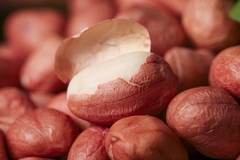Healthier childhood diets may prevent early periods and reduce disease risk
A recent study reveals that a healthy diet in childhood can prevent early menstrual periods regardless of body mass index (BMI) or height, which has been linked to earlier onset of periods.
The researchers underline the importance of their findings, highlighting that women who have early periods may be at higher risk for diabetes, obesity, breast cancer, and diseases of the heart and blood vessels. They call for accessibility to healthy meal options for all children and adolescents.
Lead researcher, Holly Harris, MPH, ScD, an associate professor at the Fred Hutchinson Cancer Center in Seattle, Washington, US, says: “I think our findings highlight the need for all children and adolescents to have access to healthy meal options and the importance of school-based breakfasts and lunches being based on evidence-based guidelines.”
Over 7,500 diets tracked
The study, published in Human Reproduction, claims it is the first to link specific diets to the age of menarche.
Children filled out questionnaires about their diet before their periods started, when they joined the study, and every one to three years after.
The researchers compared the girls’ diets with the Alternative Healthy Eating Index (AHEI) and the Empirical Dietary Inflammatory Pattern (EDIP).

AHEI gives points to healthier foods, including vegetables, legumes, and whole grains. Unhealthy foods like red and processed meats, trans fats, and salt get fewer points. EDIP gives points based on inflammation-causing foods. Red and processed meat, meat from animal organs, refined grains, and high-energy drinks are considered more inflammatory.
Girls who ate a healthier, anti-inflammatory diet were less likely to start their periods early, regardless of their body size.Harris explains: “We observed that these two dietary patterns were associated with age at menarche, indicating that a healthier diet was linked to menstrual periods starting at an older age. Importantly, these results were independent of BMI and height, demonstrating the importance of a healthy diet regardless of body size.”
Diet and inflammation over height and BMI
During the study, 93% or 6,992 girls had their first period. Analysis revealed that 20% had the highest AHEI score (healthiest diets) and were 8% less likely to have their first period within the next month. On the other hand, 20% had the lowest AHEI score.
Twenty percent with the highest EDIP score (most inflammatory diet) were 15% more likely to have their first period in the next month, compared to 20% who had the lowest EDIP score.
Therefore, the researchers believe the type of food and inflammation influence menarche timing rather than height and BMI.
“As this is the first study to look at these specific dietary patterns it is important to examine the association in other populations. It also highlights that eating a healthy diet, which we know is associated with chronic disease outcomes in later life, could also have benefits in adolescence,” says Harris.
“Generally, eating fruits, vegetables, whole grains, fatty fish, nuts, legumes, and polyunsaturated fatty acids while limiting intake of red and processed meats, refined grains, sugar-sweetened beverages, and added salt benefits everyone regardless of age.”
 Early menstruation has been linked to higher risks of breast cancer, heart disease, and diabetes later in life.Harris’ team plans to study how childhood and adolescent dietary patterns and body size influence characteristics of menstrual cycles in adulthood.
Early menstruation has been linked to higher risks of breast cancer, heart disease, and diabetes later in life.Harris’ team plans to study how childhood and adolescent dietary patterns and body size influence characteristics of menstrual cycles in adulthood.
She explains how her new research took shape: “In previous work that we had conducted in the Nurses’ Health Study II, an ongoing prospective cohort, we observed a higher risk of breast cancer among people who consumed an inflammatory-promoting diet during adolescence and early adulthood.”
“Following these results, we were interested in understanding whether earlier life dietary intake might influence breast cancer through impact on risk factors for breast cancer that occur between early life and breast cancer, such as age at menarche. This led to the current study, where we examined the impact of dietary patterns on age at menarche.”















